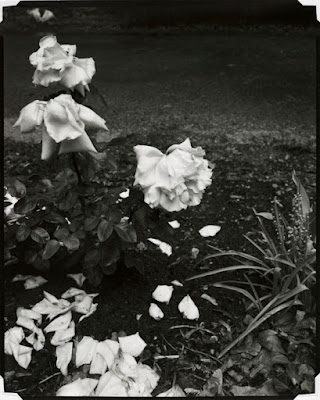 |
| Terry Evans Field Museum Drawer of Cardinals, Various Dates 2001 inkjet print Milwaukee Art Museum |
 |
| Terry Evans Field Museum Drawer of Meadowlarks, Various Dates 2001 inkjet print Milwaukee Art Museum |
 |
| Jeff Wall Rainfilled Suitcase 2001 silver dye bleach transparency Art Institute of Chicago |
 |
| Tina Barney Dining Hall 2001 C-print Princeton University Art Museum |
 |
| Jeff Mermelstein Sept 11, 2001 2001 C-print Art Institute of Chicago |
 |
| Nicholas Nixon Bebe's Roses, Broddine 2001 gelatin silver print Cleveland Museum of Art |
 |
| Abelardo Morell Camera Obscura Image of Canal Park, Akron, Ohio 2000 gelatin silver print Cleveland Museum of Art |
 |
| Abelardo Morell Camera Obscura Image of El Vedado, Habana, looking northwest, Cuba 2002 inkjet print Princeton University Art Museum |
 |
| Abelardo Morell Camera Obscura Image of La Giraldilla de la Habana in Room with Broken Wall, Cuba 2002 inkjet print Princeton University Art Museum |
 |
| Abelardo Morell Book with Wavy Pages 2001 gelatin silver print Cleveland Museum of Art |
 |
| Tom Young Dark Openings 2002 inkjet print Nelson-Atkins Museum of Art, Kansas City, Missouri |
 |
| Candida Höfer Palacio Real Madrid I 2000 C-print Princeton University Art Museum |
 |
| David Graham Delgadillo's Snow Cap, Seligman, Arizona 2001 C-print Princeton University Art Museum |
 |
| John Riddy Maputo (Train) 2002 C-print Art Institute of Chicago |
 |
| Alec Soth Jimmie's Apartment, Memphis, Tennessee 2002 C-print Minneapolis Institute of Art |
 |
| Alec Soth Memorial, Holt Cemetery, New Orleans, Louisiana 2002 C-print Minneapolis Institute of Art |
"Now yet another and more dreadful omen
is thrust at us, bewilders our blind hearts.
Laocoön, by lot named priest of Neptune,
was sacrificing then a giant bull
upon the customary altars, when
two snakes with endless coils, from Tenedos
strike out across the tranquil deep (I shudder
to tell what happened), resting on the waters,
advancing shoreward side by side; their breasts
erect among the waves, their blood-red crests
are higher than the breakers. And behind,
the rest of them skims on along the sea;
their mighty backs are curved in folds. The foaming
salt surge is roaring. Now they reach the fields.
Their eyes are drenched with blood and fire – they burn.
They lick their hissing jaws with quivering tongues.
We scatter at the sight, our blood is gone.
They strike a straight line toward Laocoön.
At first each snake entwines the tiny bodies
of his two sons in an embrace, then feasts
its fangs on their defenseless limbs. The pair
next seize upon Laocoön himself,
who nears to help his sons, carrying weapons.
They wind around his waist and twice around
his throat. They throttle him with scaly backs;
their heads and necks tower over him.
He struggles with his hands to rip their knots,
his headbands soaked in filth and in dark venom,
while he lifts high his hideous cries to heaven,
just like the bellows of a wounded bull
when it has fled the altar, shaking off
an unsure ax. But now the snakes escape:
twin dragons, gliding to the citadel
of cruel Pallas, her high shrines. They hide
beneath the goddess' feet, beneath her shield."
– Aeneas describes the death of Laocoön, from Book II of Virgil's Aeneid, translated by Allen Mandelbaum (1971)